Photographs: David Gray/Reuters.
The train cuts the travel time of the 1,318-km route to just 5 hours, half of what it took previously.
Chinese Prime Minister Wen Jiabao travelled by the first train to Shanghai after formally flagging if off in Beijing.
China flags off Beijing-Shanghai bullet train
Image: A train attendant helps a passenger on a train.Photographs: Reuters.
The bullet trains were currently being operated between several Chinese cities. However, Beijing-Shanghai covers the longest distance.
The Beijing-Shanghai train track was laid at the cost 215 billion yuan ($32.5 billion). A one-way ticket on this route will cost $63-270. It is expected to carry 80 million passengers a year.
China flags off Beijing-Shanghai bullet train
Image: A new high-speed train arrives at the Beijing-South railway station.Photographs: David Gray/Reuters.
The train travels at a maximum operating speed of about 300 kph (185 mph) instead of originally targeted 350 kph (216 mph) for safety reasons.
The train was also launched amid reports that the costs involved in running high speed trains, which also needed special tracks were driving the railway into heavy debt.
China has the world's longest high-speed rail (HSR) network with about 8,358 kilometres of routes in service as of January 2011 including 2,197 km (1,365 mi) of rail lines with top speeds of 350 km/h (220 mph).
China flags off Beijing-Shanghai bullet train
Image: CRH-380A.The Chinese government is going ahead with massive expansion of the high speed trains with new plans to expand the network to 13,000 km of track this year and 16,000 km by 2020.
The trains are also putting pressure on country's domestic airlines forcing to radically slash their ticket fares.
The electric bullet train, CRH-380A has been designed by China South Locomotive & Rolling Stock Corporation Limited (CSR) and manufactured by CSR Qingdao Sifang Locomotive & Rolling Stock Co.
China flags off Beijing-Shanghai bullet train
Image: China's high speed train.


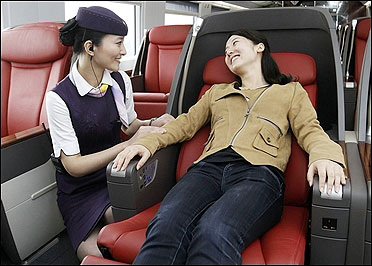
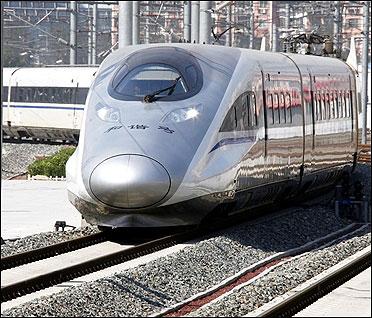
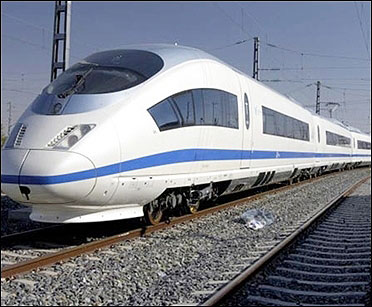
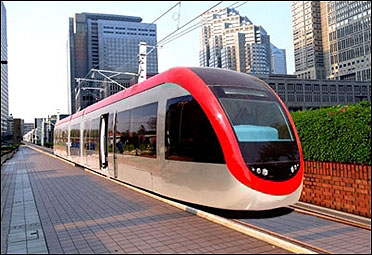
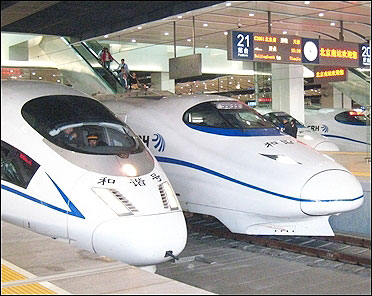
article